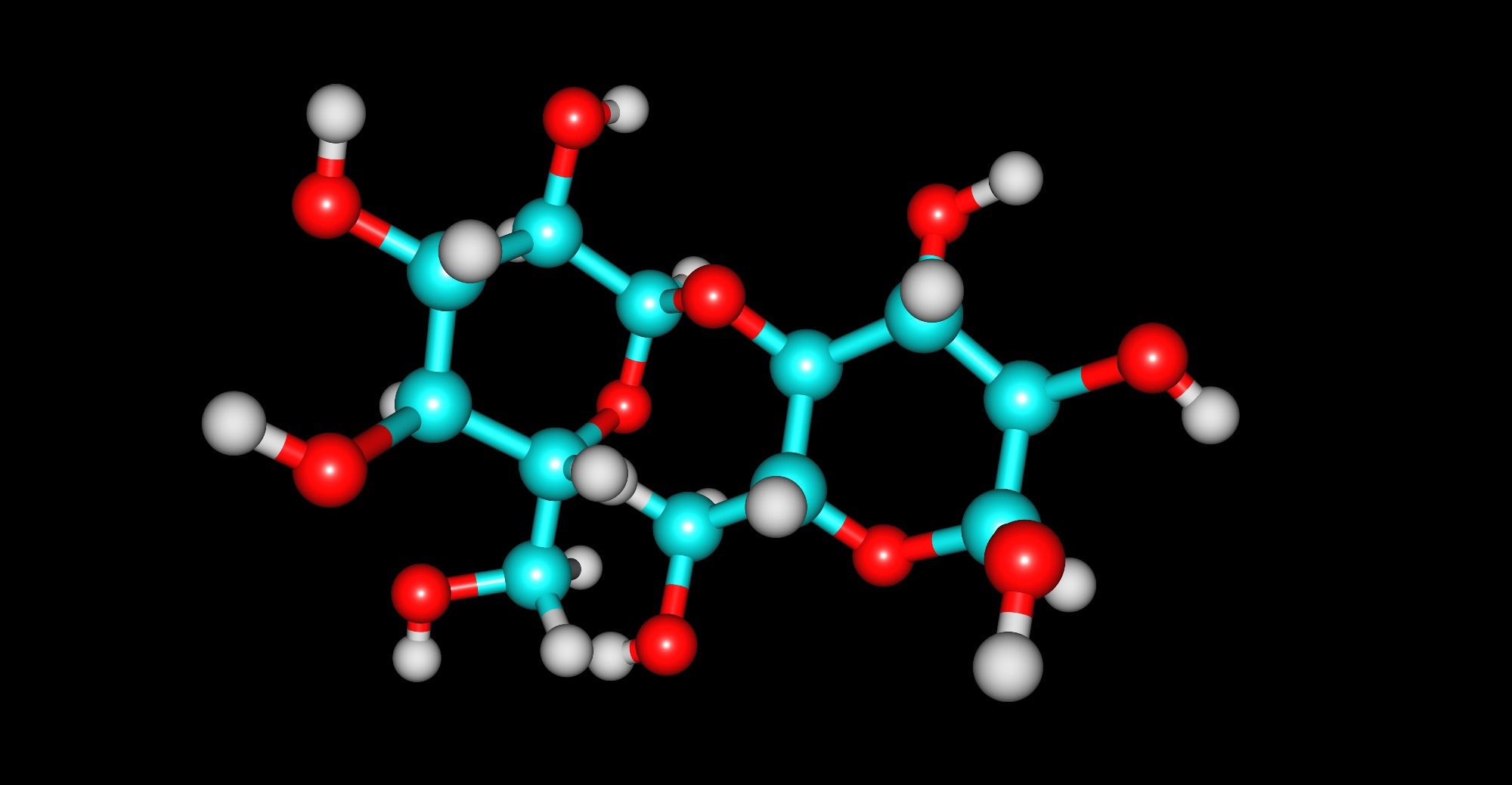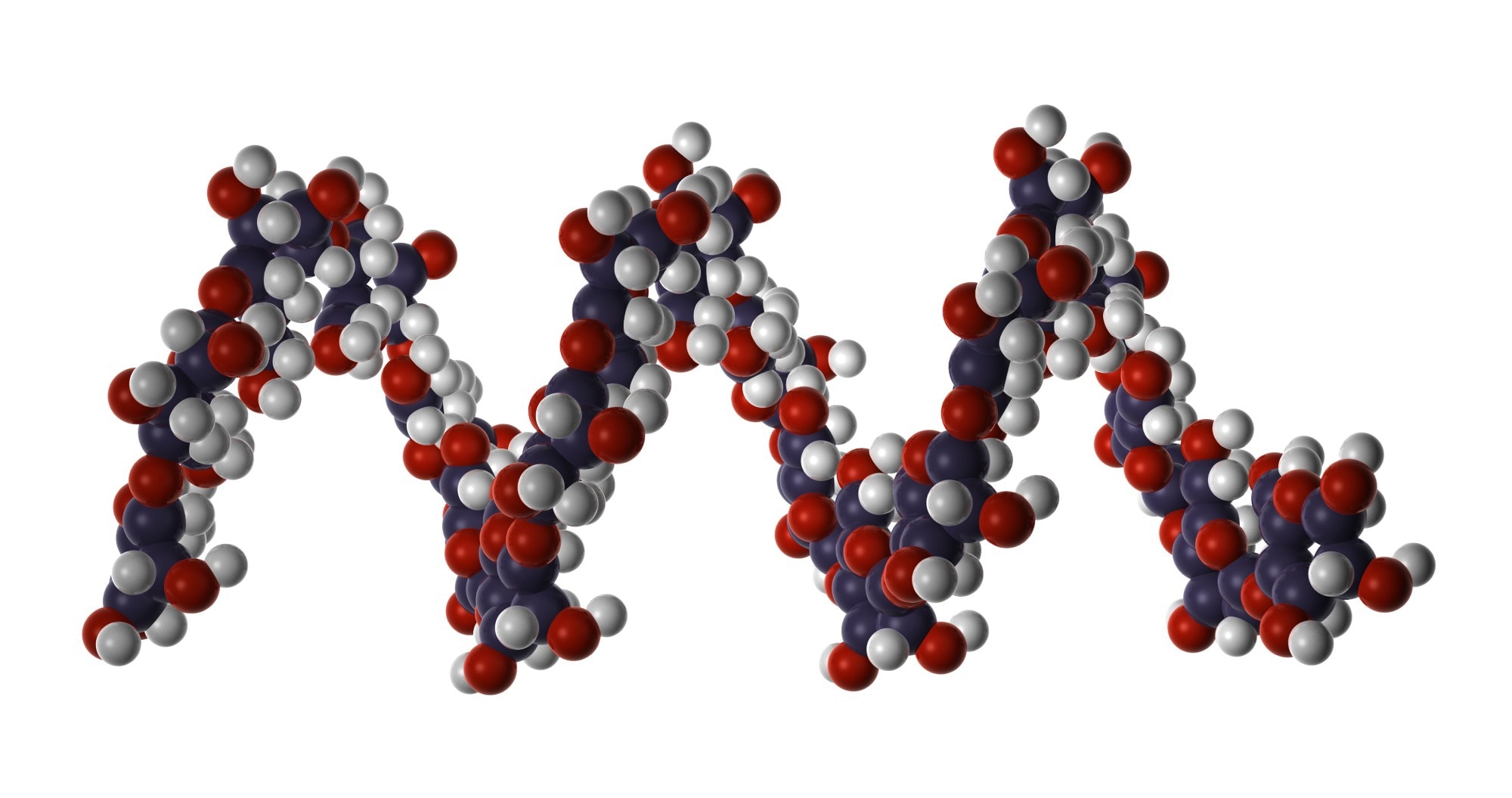From revolutionizing drug delivery methods to powering eco-friendly fuel cells, carbohydrate polymers are poised to play a pivotal role in shaping a more sustainable and innovative future across various industries.

Image Credit: Igor Petrushenko/Shutterstock.com
What are Carbohydrate Polymers?
Polymers come in many forms. Many people know about the synthetic human-made polymers seen in everyday life - commonly in the form of plastic products - but there is also an abundance of natural and biological polymeric materials.
Within natural and biological polymers is a specific class known as carbohydrate polymers.
There are many different types of polymers of carbohydrates found throughout the body and other biological materials, often in the form of polysaccharides - long chains of cyclic sugar groups connected via an oxygen bridge.
Carbohydrates are often disaccharides, which are two cyclic sugar units bonded together, and these carbohydrate molecules can be extended further into polysaccharide biomolecules.
These polysaccharides can have very long molecular lengths and are often termed carbohydrate polymers.
While there are many different types, they are often grouped into reserve carbohydrate polymers, structural carbohydrate polymers, and protective carbohydrate polymers.
The most common carbohydrate polymers that are found in nature are cellulose, starch, dextrins and cyclodextrins, chitin and chitosan, hyaluronic acid, and various gums (carrageenan, xanthan, etc.).
Carbohydrate polymers are an environmentally friendly answer to synthetic polymers, have a low cost, are abundant, renewable, and can be easily modified to make materials with superior properties.
For these reasons, there has been a lot of interest in recent years in using carbohydrate polymers in various commercial applications.
Applications of Carbohydrate Polymers: Drug Delivery
As carbohydrate polymers are biomolecules found in the body, they have the potential to be excellent drug delivery vessels due to their inherent biocompatibility and ability to be excreted from the body after the drugs have been delivered.
They must be modified first, but as a raw starting material, certain types of carbohydrate polymers have great potential; hyaluronic acid and chitosan are particularly excellent examples.
These materials have been used to create hydrogels, liposomes, microparticles, and granules that can carry a wide range of drugs through dermal and oral delivery routes.
Carbohydrate polymers are used in various applications within the realm of drug delivery, with applications in drug targeting, immune antigens, sustained drug release, and adjuvants.
Examples of their use in drug delivery include the use of high-molecular-weight carbohydrate polymer xanthan gum in the development of hydrogels and nanogels for sustained drug release.
Dextran, another type of carbohydrate polymer, is popular in many drug delivery systems, where it is often used in the delivery of drugs that are unstable or do not pass through cellular membranes easily.
Alginates are carbohydrate polymers that are often used are microspheres, gels, and nanoparticles in drug delivery systems to ensure the controlled release of the pharmaceutical compound.
Gellan is commonly used as an adhesive to keep a drug on the targeted area of the body. For example, studies have shown that it can be used as a mucoadhesive in situ gel for nasal administration.
After cellulose, chitin is the most abundant natural biodegradable polymer.
This type of carbohydrate polymer has been used extensively in drug delivery systems.
Recent research has demonstrated the novel use of chitin in the form of nanocrystalline particles. However, more studies are needed to understand more about the drug release of chitin in this form.
Pullanans are carbohydrate polymers that were first used for drug delivery in microcapsules.
Pullanans are also commonly used as nanoparticles. For example, they have been modified to treat liver diseases, and some studies have also investigated their use in the treatment of anti-inflammatory diseases.
As well as delivering drugs, and still in the medical field, hyaluronic acid has also been used in medical wound dressings.

Image Credit: cvelee/Shutterstock.com
Applications of Carbohydrate Polymers: Corrosion Resistance
Carbohydrate polymers have also been touted as a class of molecules that can prevent metals from corroding by acting as chemical inhibitors.
Chemical inhibitors can be used to protect metals against changes in pH, temperature, and moisture, as well as any changes in the device where they are used - such as changes in the electrolyte within a battery system.
Carbohydrate polymers are being trialed over other chemicals because they are less toxic, of lower cost, are less harsh to the environment once used (eco-friendlier), and are readily available.
Many have a unique inhibiting mechanism to counteract corrosion, where they have specific absorption centers that can absorb various molecules that would cause the metal to corrode.
The inhibiting center is due to the cyclic rings in the long chains being able to form bonds with the incoming molecules, thus trapping the corrosion-inducing molecules.
Applications of Carbohydrate Polymers: Catalysis
Carbohydrate polymers also have potential in heterogeneous catalysis - that is, catalysis where the catalyst is in a different matter state/phase to the reactants, e.g., a solid surface with liquid reactants.
The use of carbohydrate polymers has extended to using starch, cellulose, and chitosan as catalytic surfaces, where the they act as a support surface for the reaction to take place.
There are many reasons for trialing carbohydrate polymers in catalysis applications, including the ease with which the physical and chemical properties can be tuned, desirable functional groups, low toxicity, and high thermal stability.
Applications of Carbohydrate Polymers: Fuel Cell
Another area of interest is fuel cells. In fuel cell applications, chitosan, starch, cellulose, and glycogen carbohydrate polymer have been used as the starting material in alternative synthetic pathways to yield new low-cost and eco-friendlier polymer electrolytes.
In these applications, their aim has not to be more efficient but provide a less toxic and cheaper alternative to the status quo.
Chitosan has also been touted as a material that can be used in the proton-exchange membrane in fuel cells as its physical and chemical properties can be easily modified to fit the requirements required in these membranes, such as low methanol permeability and hydrophobicity.
Recent research has suggested that cellulose, in an aqueous solution or liquid phase, could be used as a sustainable fuel supply.
The Future of Carbohydrate Polymers
As the world looks more and more at renewable and sustainable materials, it is likely that more applications of carbohydrate polymers will emerge, particularly in fuel cells and drug delivery systems, where they have already made a great impact.
Given the availability and biocompatibility of carbohydrate polymers, it can be expected that many more medical and healthcare applications of this type of material will be developed in the coming years.
Continue Reading: What is a Carbohydrate Polymer?
References and Further Reading
Antolini E. (2020). Lignocellulose, Cellulose and Lignin as Renewable Alternative Fuels for Direct Biomass Fuel Cells. Chem Sis Chem. 14(1):189-207. doi: 10.1002/cssc.202001807
Di X, et al. (2022). Carbohydrates Used in Polymeric Systems for Drug Delivery: From Structures to Applications. Pharmaceutics. 14(4):739. doi: 10.3390/pharmaceutics14040739.
This article was updated August 2023.
Disclaimer: The views expressed here are those of the author expressed in their private capacity and do not necessarily represent the views of AZoM.com Limited T/A AZoNetwork the owner and operator of this website. This disclaimer forms part of the Terms and conditions of use of this website.